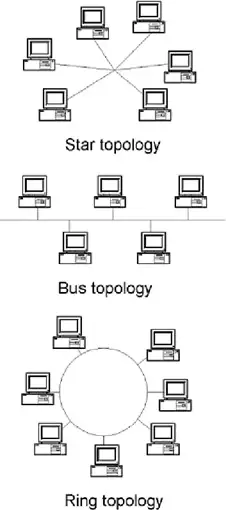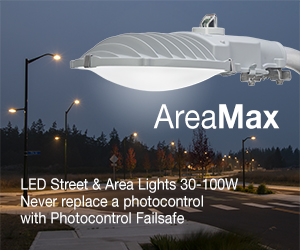Electrical Panel Labels fro Safety and Efficiency
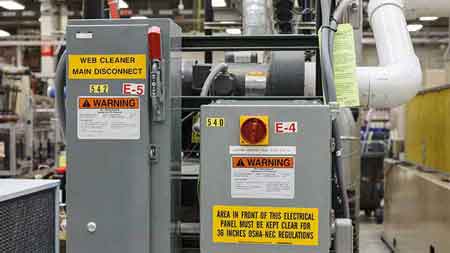
Arc Flash Training - CSA Z462 Electrical Safety
Our customized live online or in‑person group training can be delivered to your staff at your location.

- Live Online
- 6 hours Instructor-led
- Group Training Available
Download Our NFPA 70E Fact Sheet – 2024 Electrical Safety Edition
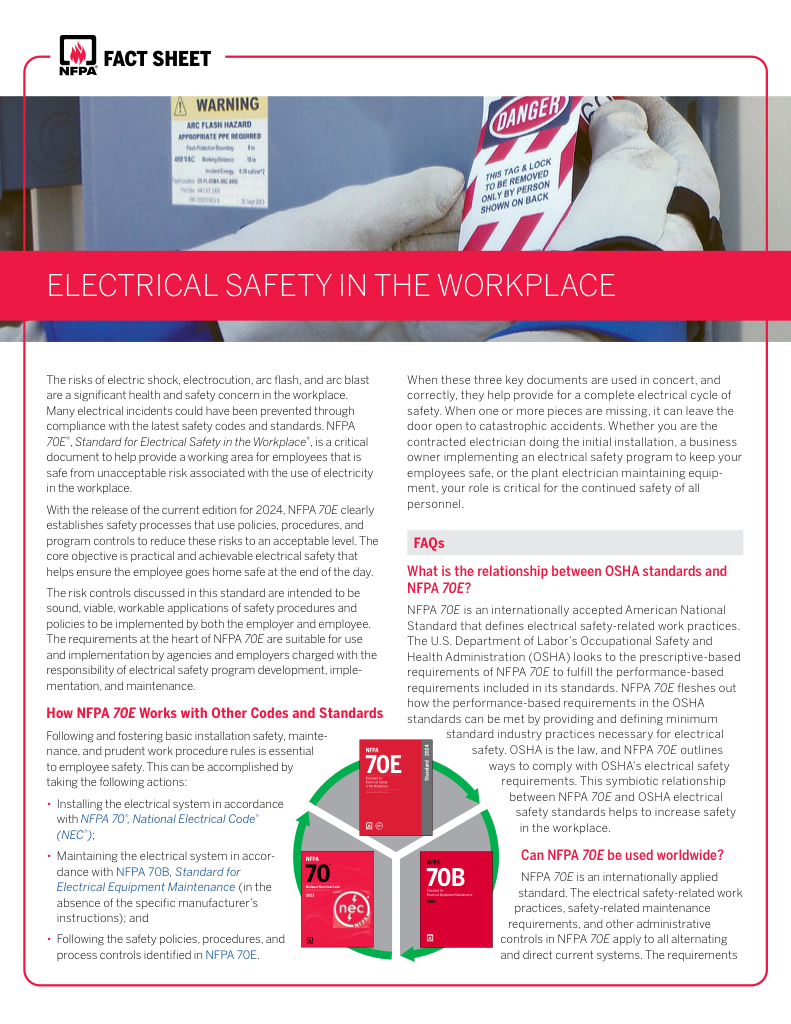
- Understand how NFPA 70E works with NEC and NFPA 70B standards
- Clarify the shared responsibility between employers and employees
- Learn how NFPA 70E supports OSHA compliance
Electrical panel labels identify circuit details, voltage ratings, and safety hazards, ensuring compliance with NFPA 70E and OSHA standards. These durable labels help workers operate, maintain, and troubleshoot electrical panels safely in commercial and industrial environments.
What are Electrical Panel Labels?
✅ Identify circuits, voltage, and safety hazards for clear equipment labelling
✅ Ensure NFPA 70E and OSHA compliance for workplace electrical safety
✅ Improve maintenance efficiency and reduce the risk of electrical accidents
Learn the essentials of workplace safety signage with our overview of arc flash labels and how they enhance hazard awareness.
Request a Free Training Quotation
Safety Labels
Safety should always be a top priority when dealing with electricity. Beyond identifying individual circuits, safety labels play a crucial role in preventing accidents. Warning labels alert you to potential hazards like arc flash, high voltage, or specific safety procedures. These labels serve as constant reminders to exercise caution and follow the National Electrical Code (NEC) guidelines. Get step-by-step instructions for creating compliant tags and signs by visiting our What is Arc Flash Labelling Guide. NEC 110.22 requires equipment to be clearly marked to indicate its purpose and safety hazards, while NEC Article 408.4 specifies that panel directories must clearly identify the circuits they control. By prominently displaying safety labels, you create a safer environment for anyone interacting with your panel. For a deeper understanding of compliance standards, see our detailed guide on NFPA 70E arc flash label requirements.
Electrical Panel Labels – Technical Requirements Overview
| Label Type | Required Information | Code/Standard Reference | Placement |
|---|---|---|---|
| Equipment ID | Panel ID, voltage, source of supply | NEC 110.22(A), NEC 408.4(B) | Exterior door, top-left |
| Circuit Directory | Circuit numbers, load descriptions, breaker ratings | NEC 408.4(A) | Inside panel door |
| Arc Flash Warning | Voltage, arc-flash boundary, PPE info | NFPA 70E 130.5(H), NEC 110.16(B) | Exterior, visible before operation |
| Shock/Voltage Marking | Nominal voltage, phase system, high-leg ID if applicable | NEC 110.15, 408.3(E) | Near terminations and access points |
| Source of Supply | Upstream device ID and location | NEC 408.4(B) | Exterior and inside near main lugs |
| Phase Identification | A-B-C phase color coding, high-leg marking | NEC 110.15, 408.3(E) | Bus covers, barriers, gutters |
| LOTO Identification | Energy isolation point ID, procedure reference | OSHA 29 CFR 1910.147 | Main disconnect and lockout points |
| Maintenance Reference | Date of last update, QR to diagrams/study | NFPA 70E (good practice) | Near arc-flash or equipment ID label |
Labeling Best Practices
Before applying labels, clean the panel surface thoroughly to remove dust, grease, or moisture, ensuring maximum adhesion. Place labels where they are easily visible at normal working height and angle. For hazard warnings, position them so they can be read before a person touches or operates the panel. Avoid placing labels where they could be obstructed by wires, tools, or open doors. Learn how proper arc flash labeling helps protect workers and ensure OSHA compliance in both industrial and commercial environments.
FREE EF Electrical Training Catalog
Download our FREE Electrical Training Catalog and explore a full range of expert-led electrical training courses.
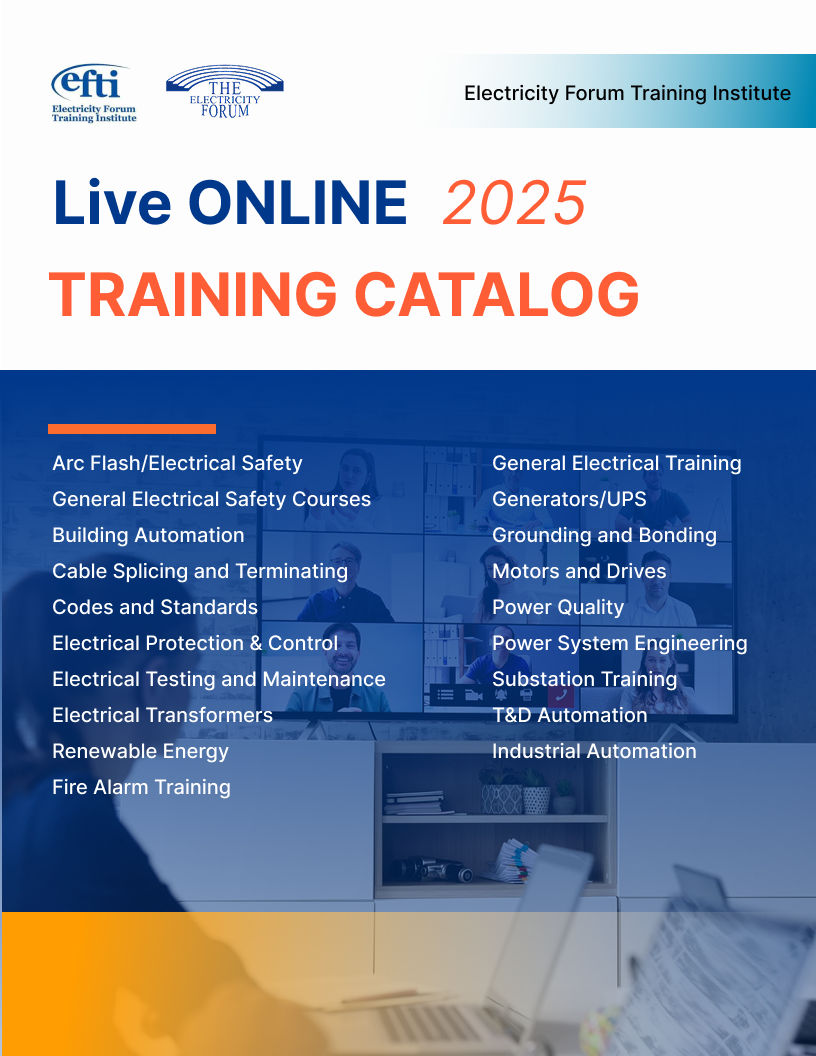
- Live online and in-person courses available
- Real-time instruction with Q&A from industry experts
- Flexible scheduling for your convenience
Circuit Directory
Think of your circuit directory as a roadmap to your system. Located on the inside of the panel door, this directory provides a comprehensive overview of each circuit, its corresponding breaker, and the areas or appliances it serves. A well-maintained circuit directory acts as a central reference point, making it easy to identify and manage the various circuits in your home or facility. NEC Article 408.4 requires these directories to be accurate, clear, and updated whenever changes are made.
Residential Mapping Tools
For residential labeling, consider using a combination of alphanumeric codes (e.g., “B1 – Kitchen Lights”) and color-coding to quickly identify circuit groups. Mapping techniques, such as numbering from top to bottom and left to right, can make identification faster. You can also create a printed template showing breaker positions and corresponding labels, laminated for durability, and attached inside the panel.
Load Center
The heart of your system is the load center, commonly known as the panel or breaker box. This is where the main power supply enters your building and is distributed to various circuits. Understanding the function of your load center is essential for maintaining a safe and efficient system. It’s the central hub that controls the flow of electricity, protecting your appliances and devices from overloads and short circuits. If you’re unsure about when to apply them, read our article on are arc flash labels required for code-specific requirements.
Breaker Box
While often used interchangeably with “electrical panel,” the term “breaker box” specifically highlights the protective function of this essential component. The breakers inside act as safety switches, automatically interrupting the flow of electricity in case of a fault or overload. This prevents damage to your appliances and wiring, and most importantly, reduces the risk of fires. Our page on arc flash analysis and labeling solutions explains how hazard assessment integrates with accurate labeling.
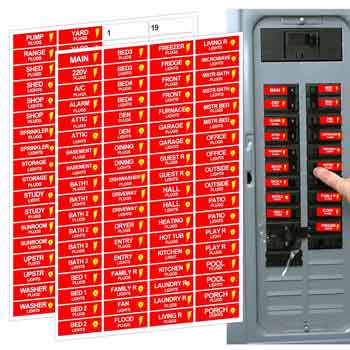
Panel Schedule
A panel schedule is a detailed document that provides a comprehensive overview of your panel. It lists all the circuits, their corresponding breakers, amperage ratings, and the specific areas or appliances they serve. Electricians rely on panel schedules to understand the layout of your panel, identify potential issues, and ensure compliance with NEC standards.
DIY Labeling
Labeling your own panel can be a straightforward task with the right approach. Use pre-printed labels, writable labels, or a label maker. Choose clear, durable materials—vinyl and polyester labels are recommended for their resistance to fading, moisture, and abrasion. Color-coded backgrounds can help distinguish between lighting, receptacle, and appliance circuits.
Printable Labels
For a cost-effective option, use printable label templates available online. Customize them with your own text and print on weather-resistant adhesive stock. This method allows for professional-looking, uniform labels tailored to your specific panel configuration.
Legibility
Labels should be easy to read from a safe distance, with clear fonts and contrasting colors. Avoid overcrowding with excessive text. NEC 110.22 emphasizes that markings must be “of sufficient durability to withstand the environment involved.” For hazard communication in high-risk areas, check our resource on arc flash warning labels.
Adhesive Labels
Choose labels with industrial-grade adhesive that maintains adhesion in varying temperatures and humidity levels. Poor adhesion can cause labels to peel and become unreadable over time, compromising safety.
Maintenance & Training
Label maintenance is just as important as initial labeling. Inspect labels during routine electrical maintenance, replacing any that are faded, damaged, or missing. Update panel directories whenever modifications are made. In commercial and industrial environments, train personnel to understand labeling conventions and to report missing or damaged labels.
Electricity Today T&D Magazine Subscribe for FREE

- Timely insights from industry experts
- Practical solutions T&D engineers
- Free access to every issue
Frequently Asked Questions
What information should be included on electrical panel labels?
Each label should clearly identify the circuit breaker it corresponds to and the specific area or appliance it serves. For example, "Living Room Lights" or "Refrigerator." You may also include the amperage rating of the circuit.
Why is it important to label accurately?
Accurate labelling ensures safety by allowing for quick identification of circuits in an emergency. It also simplifies troubleshooting, repairs, and future modifications to your system.
What are the requirements under NFPA 70E or NEC standards?
NFPA 70E and NEC standards mandate clear and durable labelling of equipment to ensure safety. Labels must identify equipment, potential hazards (like arc flash), and safety procedures.
How often should they be updated?
Panel labels should be updated whenever changes are made to the system, such as adding new circuits or appliances. It's also good practice to periodically inspect labels for legibility and replace any damaged or faded ones.
Electrical panel labels are a critical component of safety and organization. Clear and accurate labels on circuit breakers, directory panels, and safety warnings help prevent accidents, facilitate quick identification of circuits, and simplify maintenance and repairs. Whether in a home or industrial setting, proper labeling ensures everyone can interact afely and efficiently. By using durable labels and adhering to NEC standards, you create a safer and more manageable system for the long term.





